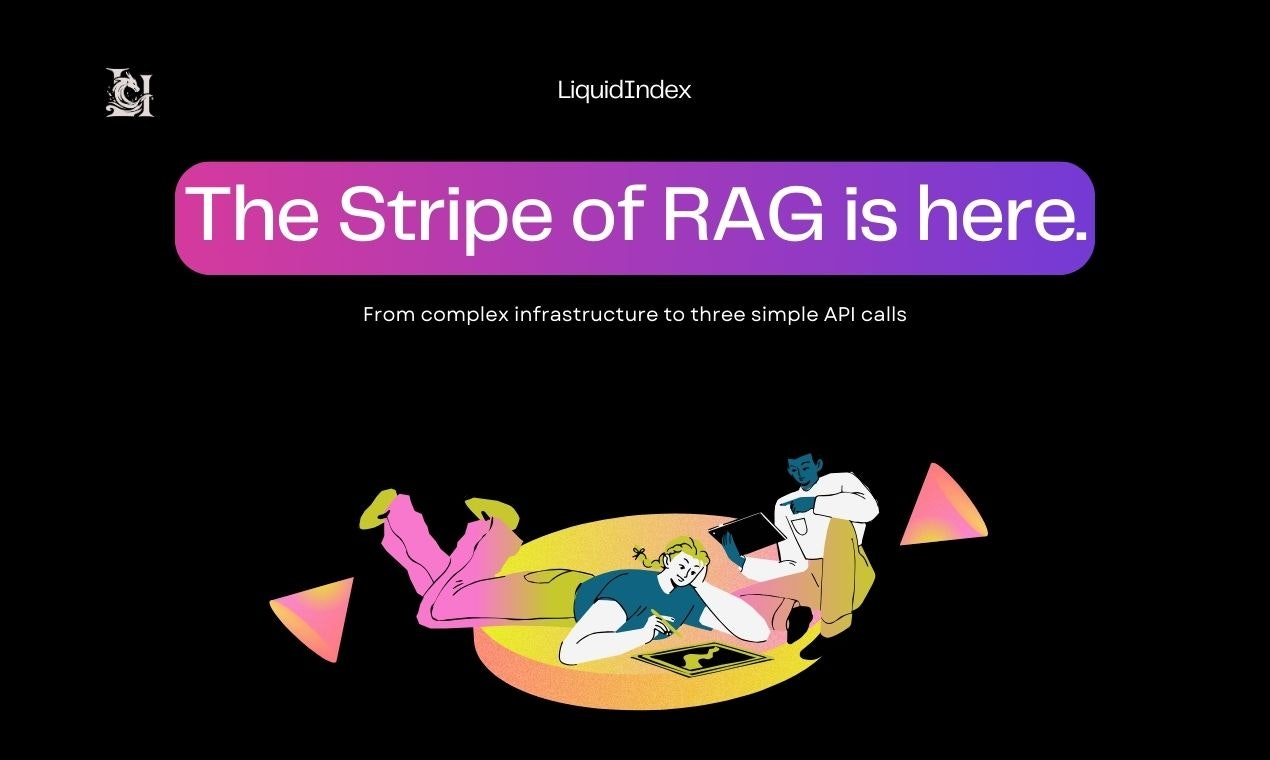Table of Contents
Overview
Tired of wrestling with complex infrastructure just to add AI smarts to your applications? LiquidIndex 2.0 promises a breath of fresh air. Imagine integrating Retrieval-Augmented Generation (RAG) capabilities into your projects with the ease of setting up Stripe Checkout. This plug-and-play solution aims to simplify AI integration, offering a fully multi-tenant, scalable setup that lets developers onboard customers, link data sources, and start querying within minutes. Let’s dive into what LiquidIndex 2.0 has to offer.
Key Features
LiquidIndex 2.0 boasts several key features designed to streamline AI integration:
- Plug-and-play RAG integration: Quickly add RAG capabilities to your applications without extensive coding or infrastructure setup.
- Fully multi-tenant architecture: Easily onboard and manage multiple customers or users within a single LiquidIndex instance.
- Scalable and fast deployment: Deploy your AI-powered applications quickly and scale them effortlessly as your needs grow.
- No infrastructure setup needed: Eliminate the complexities of managing servers, databases, and other infrastructure components.
- Stripe Checkout-like experience: Enjoy a user-friendly and intuitive interface for managing your AI integrations.
How It Works
The process of using LiquidIndex 2.0 is designed to be straightforward. Developers begin by creating a customer instance within the platform. Next, they connect their desired data sources, which can include documents, APIs, or other relevant information. Once the data sources are linked, developers can use the LiquidIndex interface to perform queries. The service handles the heavy lifting of indexing, retrieval, and response generation, all optimized for low-latency and scalability. This allows developers to focus on building their applications rather than managing the underlying AI infrastructure.
Use Cases
LiquidIndex 2.0 can be applied to a wide range of use cases, including:
- Internal knowledge bases: Empower employees to quickly find the information they need within internal documentation and resources.
- Customer support bots: Provide instant and accurate answers to customer inquiries, improving customer satisfaction and reducing support costs.
- SaaS enhancements with AI: Add intelligent features to your SaaS applications, such as personalized recommendations or automated content generation.
- Fast prototyping for AI apps: Quickly build and test AI-powered prototypes without the need for extensive infrastructure setup.
- Search-enhanced apps: Improve the search functionality of your applications by leveraging RAG to provide more relevant and comprehensive results.
Pros & Cons
Like any tool, LiquidIndex 2.0 has its strengths and weaknesses. Let’s take a look at the advantages and disadvantages.
Advantages
- Extremely fast deployment, allowing you to get up and running quickly.
- No infrastructure maintenance, freeing up your time and resources.
- Developer-friendly interface, making it easy to use and integrate into your projects.
- Good for prototypes and scaling, providing a flexible solution for various stages of development.
Disadvantages
- Limited customization options, which may not be suitable for all use cases.
- Less suited for deeply customized AI pipelines, where more control over the underlying infrastructure is required.
How Does It Compare?
When considering RAG solutions, it’s important to understand how LiquidIndex 2.0 stacks up against the competition. Compared to Pinecone, LiquidIndex 2.0 requires significantly less infrastructure setup. While LangChain offers more flexibility, it also comes with increased complexity in terms of deployment and management. LiquidIndex 2.0 aims to strike a balance between ease of use and functionality.
Final Thoughts
LiquidIndex 2.0 offers a compelling solution for developers seeking to integrate RAG capabilities into their applications quickly and easily. Its plug-and-play nature and focus on scalability make it a strong contender for projects where rapid deployment and minimal infrastructure management are key priorities. While it may not be the best choice for highly customized AI pipelines, its ease of use and multi-tenant architecture make it a valuable tool for a wide range of use cases.
https://liquidindex.dev